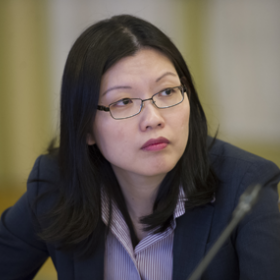
Navigating Climate Change: An Agenda for U.S.-Chinese Cooperation
This publication argues that equitable measurement regimes and trade in clean energy technologies are essential for U.S.-China leadership to combat climate change.
Executive Summary
Between June 2009 and January 2010, the EastWest Institute (EWI) began exploring how the United States, China, and the international community could build strategic trust through cooperation on climate change and climate security. EWI examined this issue through policy discussions in several forums: Track 2 processes such as the U.S.-China High Level Security Dialogue and the U.S.-China-Europe Trialogue21 initiative; a roundtable session in New York; and the U.S.-China Working Group on Climate Change—a group of Chinese and American experts convened with the support of the Connect U.S. Fund who met before and after Copenhagen to assess progress and to determine ways to move forward.
The timing has been fortuitous. The United States is re-engaged, domestically and internationally, on climate change issues; the Obama administration has moved climate and clean-energy cooperation to the top of the bilateral agenda with China; and the disappointing Copenhagen climate change negotiations have left the United States, China, and the global community with much to do to find a new international framework on climate change before the Kyoto Protocol expires in 2012.
This paper captures key observations from those discussions, focusing on two areas that pose the biggest obstacles to progress in bilateral and multilateral efforts to address climate change concerns. These areas are:
- The trade-off between emission caps and development goals;
- Technology transfer and intellectual property (IP) rights.
An important caveat: while the paper draws heavily on the discussions of the EWI-convened U.S.-China Working Group on Climate Change, the views in this paper should not be ascribed, individually or collectively, to members of the group. The group’s debates and discussions helped inform this paper’s analysis and recommendations, but the paper does not reflect a consensus in the group, because indeed consensus was lacking.
- The main challenges and recommendations relating to the main points of contention are summarized in Table 1. Among the biggest concerns—reinforced in large part at the Copenhagen meeting—are:
- The establishment of a system for the measurement, reporting, and verification (MRV) of emissions commitments that is acceptable to both developed and developing countries;
- Fostering confidence between the United States and China in each other’s carbon reduction commitments;
- Overcoming market, regulatory, and political barriers to technology transfer, including concerns over signs of “energy protectionism;”
- Reconciling different notions and expectations between developed and developing countries about each other’s role in technology transfer and financing;
- Building confidence in China’s IP protection regime and the broader international debate about the role of IP in clean energy technology transfer under the United Nations Framework for Climate Change Cooperation (UNFCCC).
Evident in the discussions was a stark contrast in the underlying American and Chinese assumptions that frame the debate. The two countries differ in their views of their obligations to reduce carbon emissions, their relative willingness to compromise national sovereignty for verification regimes, their contrasting notions of technological transfer from developed to developing countries, and their assessment of the role of IP (including China’s IP system) in the facilitation of such transfers.
Politics also play a role. Prospects of climate change legislation in the United States are dim: the divisive battle over health care reform and upcoming mid-term congressional elections have hardened divides within the U.S. And the politics of U.S.-China relations, which have affected mutual perceptions and cooperation in areas such as security and trade, have spilled over to the realm of climate change and clean energy as well.
The recommendations in this paper primarily address U.S.-China cooperation. The two countries are the world’s largest carbon emitters and have a critical role to play in moving the international process ahead. While the United States and China do not speak for all developed and developing countries respectively, we hope that these recommendations will help shape a framework that both developed and developing countries can accept.
Table 1: Summary of Main Challenges and Recommendations
|
Challenges |
Recommendations |
|
Emissions Caps and Development Goals |
|
|
Building a structure for MRV that is acceptable to both developed and developing countries. |
|
|
Building confidence between the United States and China in each other’s carbon-reduction commitments.
|
|
|
Technology Transfer and IP Rights |
|
|
“Energy protectionism,” regulatory and trade barriers, political barriers, and concerns about competition. |
|
|
Different notions of technology transfer and financing. |
|
|
Determining the role of IP in UNFCCC discussions on technology transfers. |
|

